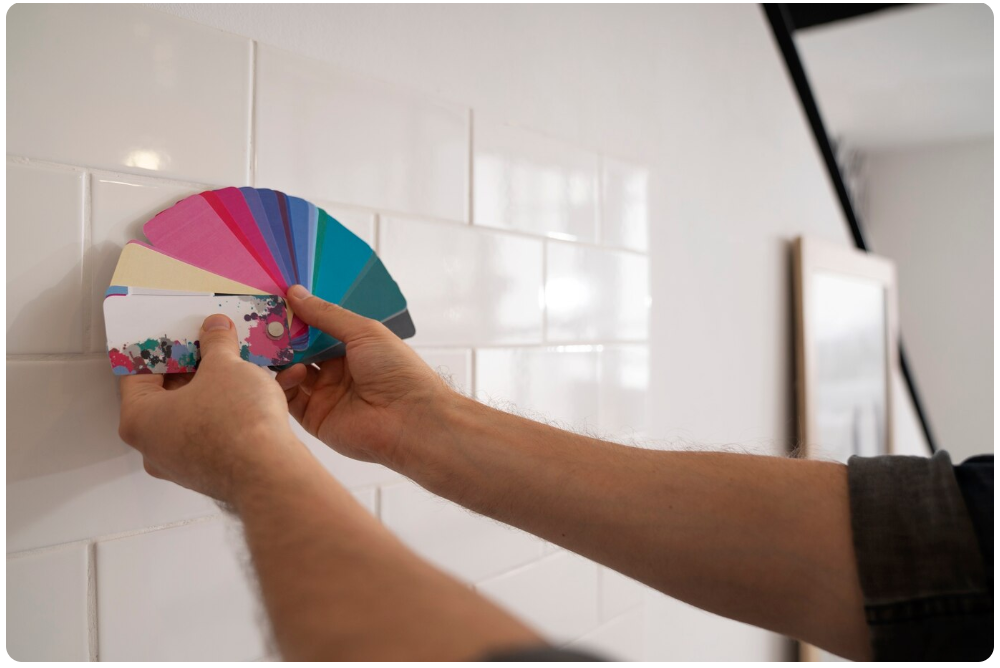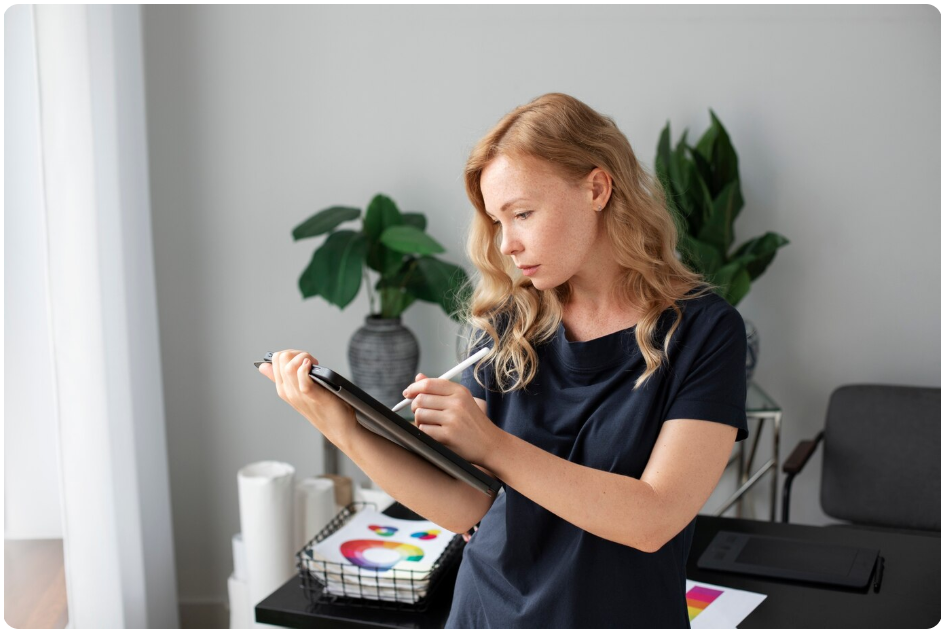- Close Menu

Ready to stop fumbling with tile samples and start laying down combinations that look effortless?
Mixing and matching tile colors isn’t rocket science—it’s a system.
Nail the fundamentals, and you’ll transform any room from “meh” to “wow” without second-guessing your choices.
No more random swatches on the floor; you’re about to get surgical with color. Let’s dive in.

Stop guessing. Warm colors (reds, oranges, yellows) scream energy; cool colors (blues, greens, purples) whisper calm. If you pair warm on warm or cool on cool, you get harmony—think sunset kitchens or spa-like bathrooms. But cross that line and you risk chaos. A single cool accent in a sea of warm tiles gives relief. Reverse it for drama. Know your temperature and own the vibe.
This isn’t interior design 101 fluff—it’s math that works.
60% Base Color: Your wall or floor’s dominant tile.
30% Secondary Color: Cabinets, counters, or large accent areas.
10% Pop Color: A single row of mosaic or a bold patterned tile.
Stick to it. Your space will feel balanced without thinking—you just applied a pro formula.
Complementary: Opposites on the wheel (blue + orange). High contrast, instant pop. Great for backsplashes or feature walls.
Analogous: Neighbors on the wheel (blue + teal + green). Subtle flow, soothing transitions. Ideal for full-room tiling where you want a gradient effect.
Want energy? Go complementary. Want serenity? Go analogous.
Accent tiles aren’t decoration—they’re anchors. A single vertical stripe next to a vanity, a framed inset in the shower, a contrasting border on the floor. Place them where you want the eye to land: above a sink, behind a range, at the foot of the tub. Don’t scatter accents; strategically deploy them.
Stop printing samples and tap your phone:
Pinterest Mood Boards: Pin real-room shots.
Sherwin-Williams ColorSnap®: Upload a photo, swap tile hues.
Morpholio Board: Drag & drop tile swatches over your walls.
Test combos in seconds. Save hours—avoid “What if” regret.
Limit your palette: More than three tile colors? You’ll overwhelm.
Check natural light: A swatch that pops under showroom lights might dull in your dim hallway.
Use neutrals as buffers: White, gray or beige grout can tame wild tiles.
Sample at scale: A 4×4″ chip won’t reveal pattern impact. Always do a larger mock-up.
Nail these, and you’ll mix like a master, not a novice.
Absolutely—just anchor 80% of the room in one temperature and use the opposite as a 20% accent. Keeps harmony with a dash of drama.
Nope. you can re-grout or use a grout pen to shift contrast vs. blend. It’s the easiest post-install hack for a fresh look.
Floors love pattern. A bold floor inset or border can ground the space and draw the eye—just keep surrounding tiles neutral.
Technically yes, but you risk chaos. If you must, treat the 4th color as a mini-accent under 5% of total area.
Tie them together with one common element—grout color, trim, or a recurring geometric shape.
Otto Tiles & Design LLC
7612 NE 4th Ct, Miami, FL 33138, United States
Phone: (786) 460 9098
Email: info@ottotiles.com
© 2025, Otto Tiles & Design LLC, All rights reserved